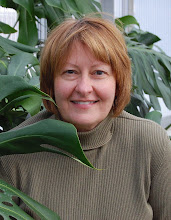Whether you have a large garden bed or only have space for a container (or several), you can entice butterflies to make a stop at a habitat you’ve provided for them. To create this butterfly area you’ll need to fulfill the ingredients list—a recipe to encourage butterflies to make a stop. They have their own agenda; you’re just trying to coax them to linger longer.
 Swallowtail on Agastache (Photo by Lauren Fox)
Swallowtail on Agastache (Photo by Lauren Fox)
Ingredient number one is a sunny, sunny, sunshiny area. A protected south or west-facing area is ideal. A nice addition, and one they would really appreciate, is a nice flat rock to sunbathe on—the colorful scales on their wings act kind of like solar panels. They need body temperatures of 85-100 ̊ just to fly and a flat rock will really help them come up to temperature on cooler mornings.
Fritillary on Zinnia (Photo by Lauren Fox)
Placing your butterfly garden in a sheltered area will satisfy ingredient number two. Butterflies don’t want to expend the energy fighting the wind. Try to use fencing or trees and shrubs to cut down on the heavy breezes for them; evergreens are especially helpful. Tiger Swallowtail on Verbena bonariensis (Photo by Lauren Fox)
Tiger Swallowtail on Verbena bonariensis (Photo by Lauren Fox)
Are you squeamish about caterpillars? Don’t be! If you want to have butterflies—you’ve got to have caterpillars first. And if you provide food for the caterpillars (ingredient number three) and give them what they like to eat (host plants) you’ll increase your chances of attracting more butterflies! Think of caterpillars as the teenagers of the butterfly life cycle—they live to eat, and eat, and eat. Fact: a caterpillar can increase its body size more than 30,000 times from the time it hatches (from an egg) until it pupates (forms its chrysalis). Amazing, huh?
Some caterpillars will feed only on one particular host plant (Monarch caterpillars only feed on milkweed plants) and some will feed on a variety of host plants. Here are some top favorite host plants: Asclepias/milkweed (P), Asters, (P), Carrots (A), Dill (A), Fennel (A), Grasses (P &A), Hollyhock (B), Parsley (B), Queen Ann’s Lace (B), Thistle (P & A), violets (P)….A= Annual, P = Perennial, B = Biennial. Some trees are great host plants as well as good hibernation sites: Ash, Birch, Elms, Hackberry, Poplar, Tuliptree, and Willow.
Bronze Fennel and Verbena bonariensis (Photo by Jack Bannister)
Now for the nectar producers that butterflies love and crave. They do prefer flowers that are fragrant, colorful to them (purples, pinks, reds, yellow and orange) and the nectar should be accessible to them: flat landing pads (like daisy, sunflower and yarrow) or short-tubed flowers (liatris, zinnia). Here are some of their favorites: Ageratum (A), Alyssum (A), Butterfly bush and Butterfly weed (P), Calendula (A), Cetranthus ruber (Red Valerian), Cosmos (A), Coreopsis (P), Edhinacea (P), Heliotrope (A), Joe-Pye weed (P), Lantana (A), Liatris (P), Marigold (A), Milkweed (P), Mints (P), Pentas, (A), Phlox (P), Rudbeckia (P), Yarrow (P), Zinnia single-petaled (A). As well as these trees and shrubs : Buckeye, Caryopteris clandonensis (Bluebeard), Clethra alnifolia (Summersweet), fruit trees, Kolkwitzia amabilis (Beauty bush), Lilac, Lindera, Spirea, Sumac, and Viburnum carlesii.
Leucanthemum daisy 'Becky' (Photo by Jack Bannister)

Try to plan your plantings in a dense cluster or grouping; butterflies are more attracted to the mass as opposed to individual plants.
So far you’ve got a great start on compiling all your ingredients. I’ve got a few more tips to add to the pot, but let’s leave it to stew in its juices for another day.










All I ever wanted to know about butterflies. Thanks for the intel.
ReplyDeleteCorrection: That's not a "fritillary" on the zinnia, it's a Painted Lady.
ReplyDelete